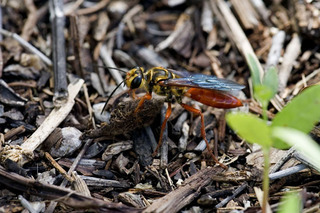
© Charles Weber · 9
Sphex jamaicensis |
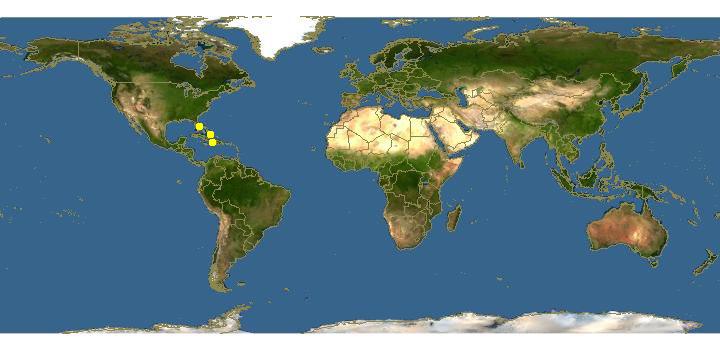
Click on map for details about points.
|
80x5 -
240x3 -
240x4 -
320x1 -
320x2 -
320x3 -
640x1 -
640x2
Set display option above.
Click on
images to enlarge. |
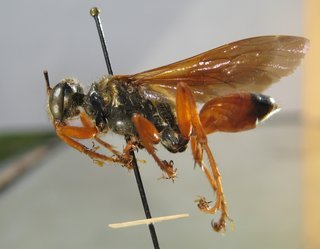
Native Bee Inventory and Monitoring Lab; Photographer: Erika Tucker · 1
Sphex jamaicensis, side |
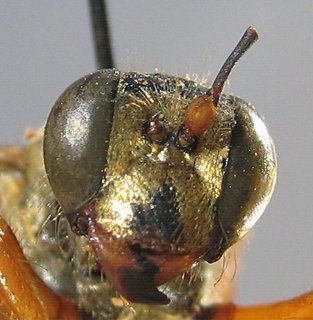
Native Bee Inventory and Monitoring Lab; Photographer: Erika Tucker · 1
Sphex jamaicensis, face |
|
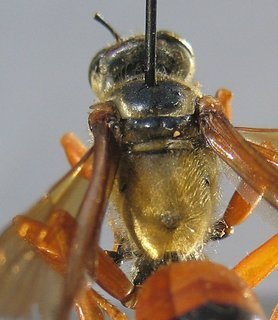
Native Bee Inventory and Monitoring Lab; Photographer: Erika Tucker · 1
Sphex jamaicensis, thorax |
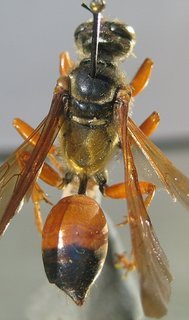
Native Bee Inventory and Monitoring Lab; Photographer: Erika Tucker · 1
Sphex jamaicensis, top |
|
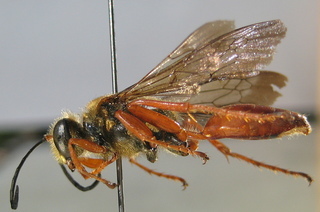
Native Bee Inventory and Monitoring Lab; Photographer: Erika Tucker · 1
Sphex jamaicensis, side |
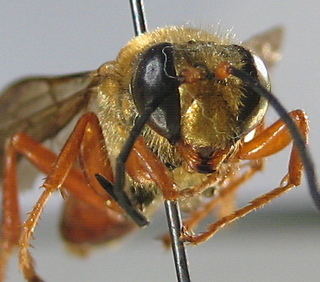
Native Bee Inventory and Monitoring Lab; Photographer: Erika Tucker · 1
Sphex jamaicensis, face |
|
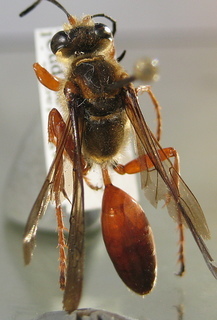
Native Bee Inventory and Monitoring Lab; Photographer: Erika Tucker · 1
Sphex jamaicensis, top |

Bohart, R.M., Menke, A.S. 1963 · 0
Sphex jamaicensis, antennae, male |
|
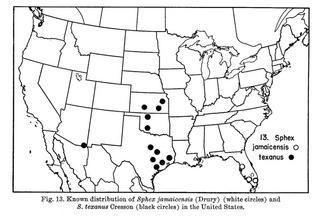
Bohart, R.M., Menke, A.S. 1963 · 0
Sphex jamaicensis, map |
|
Overview |
Taken from:
Bohart, R.M., Menke, A.S. 1963. A Reclassification of the Sphecinae: With a Revision of the Nearctic Species of the Tribes Sceliphronini and Sphecini.
Male.—Average length 19 mm; head and thorax black, scape, tegula, femur, tibia and tarsus of fore leg, all but coxae of mid and hind legs, petiole, and gaster orange red; wings brown, nearly clear in cellular area, darker at tip; erect hair of head and thorax golden; face, pronotal ridge and lobe, scutal furrows and central longitudinal stripe, postscutellum, propodeal enclosure and propodeum above hind coxa, episternal suture behind pronotal lobe, pleura above mid coxa, and stripe anterior to stigmatal groove with appressed golden pubescence; flagellum as in figure 91; sternite VIII acutely produced; genitalia as in figures 73 and 84.
Female.—Average length 24 mm; wings evenly dark brown; fore femur with scattered bristly hair on lower one-half of outer surface.
|
|
|
Names | |
Sphex jamaicensis (Drury)
(Figs. 13, 73, 84, 91)
Vespa Jamaicensis Drury, 1773, Illus. Nat. Hist. 2:index for vol. 1, description in vol. 1 (1770), p. 104, p1. 44, fig. 4, “Jamaica.” Type presumed lost
Sphex Jamaica Christ, 1791, Naturges. Elass. Nomen. Insekt., p. 292, p1. 29, fig. 1. Emendation of Vespa jamaicensis Drury, 1773.
? Sphex auriflua Perty, 1833, Delect. Anim. Articul. Brasil, p. 142, p1. 27, fig. 19. Syntypes , ♂♀, “ad flumin Rio Negro,” Brazil (MUNICH?).
Sphex aurulenta Guerin-Meneville, 1835, plate 70, fig. 2, of Icon. Reg. Animal, vol. 2, Planches Animaux Invert. Lapsus for Sphex lanierii Guerin-Méneville, 1844.
Sphex lanierii Guerin-Meneville, 1844, Icon. Beg. Animal, 3:433. Lectotype ♂, Cuba (GENOA). Present designation.
Sphex ornata Lepeletier, 1845, Hist. Nat. Insect., Hymen., 3:344. Syntype t, ♂, ♀, Cuba (TURIN?).
Sphex fulviventris Kohl, 1890, Ann. K. K. Naturhist. Hofmus. Wien, 5:431. Lectotype ♂, Cuba (LEIDEN). Present designation.
|
|
|
Geographic distribution | |
Distribution.—The species was described from South America and Cuba (fig.
13). In the United States the species is confined to Florida. We have also seen specimens from various islands in the West Indies.
|
|
|
Natural history | |
We have not studied sufficient South American Sphex to determine if jamaicensis occurs there. Therefore we have only tentatively placed aurifluus Perty in the synonymy. Dr. F. Kuhlhorn, Munich, has been unable to locate Perty’s type. Guérin-Méneville’s use of the name aurulenta for figure 2 on plate 70 in the “Iconographie” (1835) appears to be an error since in the description of lanierii (1844) he refers to the same figure. Bohart was unable to locate the syntypes of ornata but they may be at Turin. However, Lepeletier s description of ornata leaves little doubt that it is the same as .famaicensis. The name fulviventris usually is attributed to Guérin-Méneville (1831, 1838). However, van der Vecht pointed out that there is no description in any of Guérin-Méneville’s works for the species. Kohl (1890) must be considered as the author of the name. Van der Veeht (1957a) states that there is a male and a female labeled “Cuba” in Guérin-Méneville’s handwriting in the Leiden collection. We are selecting the male as lectotype. Van der Vecht (1954, 1957a) suggested that lanierii is synonymous with clavipes Kohl [ = cubensis (Fernald)]. However, ,Sphex cubensis has clublike hind femora and Guérin-Méneville’s figure of lanierii (mislabeled aurulenta) definitely does not show this feature and neither do the syntypes seen by Bohart at Genoa.
Biology.—Krombein and Evans (1954) reported nesting colonies of twenty to forty individuals in Florida.
|
|
| Supported by | |
Updated: 2024-04-25 07:26:34 gmt
|